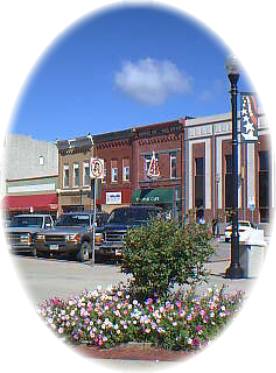
The Ox-Bow Trail started at Nebraska City, went northwest to the Platte River and then southwest to Fort Kearney. The trail was in the shape of the curved wooden yoke worn by the oxen which pulled the wagons. This trail had the advantage of easy access to water, with only one stream to ford at the crossing of Salt Creek at the Saline Ford (present day Ashland). Between 1840 and 1867, before the railroad, the Ox-Bow Trail was an important immigrant and freighter overland wagon trail and a northern "feeder" route on the Oregon-Mormon Trail.
Millions of tons of overland freight pulled by oxen teams and huge freight wagons crossed Saline Ford. Those huge wide-tired Studebaker wagons left deep and widely spread ruts up across the prairies of Saunders County headed to mining towns and to Utah. There was also military supply trains using the OxBow. It was then called the old Freighters Road or the OxBow Trail as several new trails had been laid out. The OxBow fell into disuse as soon as the railroads were built. They were the replacement roads for the OxBow traffic.
Historians have ignored th full significance of this famous old trail because of its many names. Great Platte River Road was used as a generalization. But Oregon Road changed to Mormon Road then to the California Road. The Old Freighters Road lasted longest but at the same time it was called the Military Road because so many troops and military supply units used the same route. It was a rough road or thoroughfare traveled by rough men. Fast buck artists promoted illogical routs and schemes like the Steamwagon Road as investor schemes. The Civil War interrupted military plans of the West, and then came the railroads. For thirty years the rim of the hills south of the Platte River saw an enormous amount of wagon traffic and mounted men riding westward.
Today, three major highways ( Hwy 30, Hwy 6, and Hwy 80) and two major railroads generally follow the same terrain across Nebraska.
For more information visit the Saunders County Historical Society Museum
